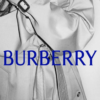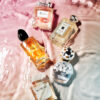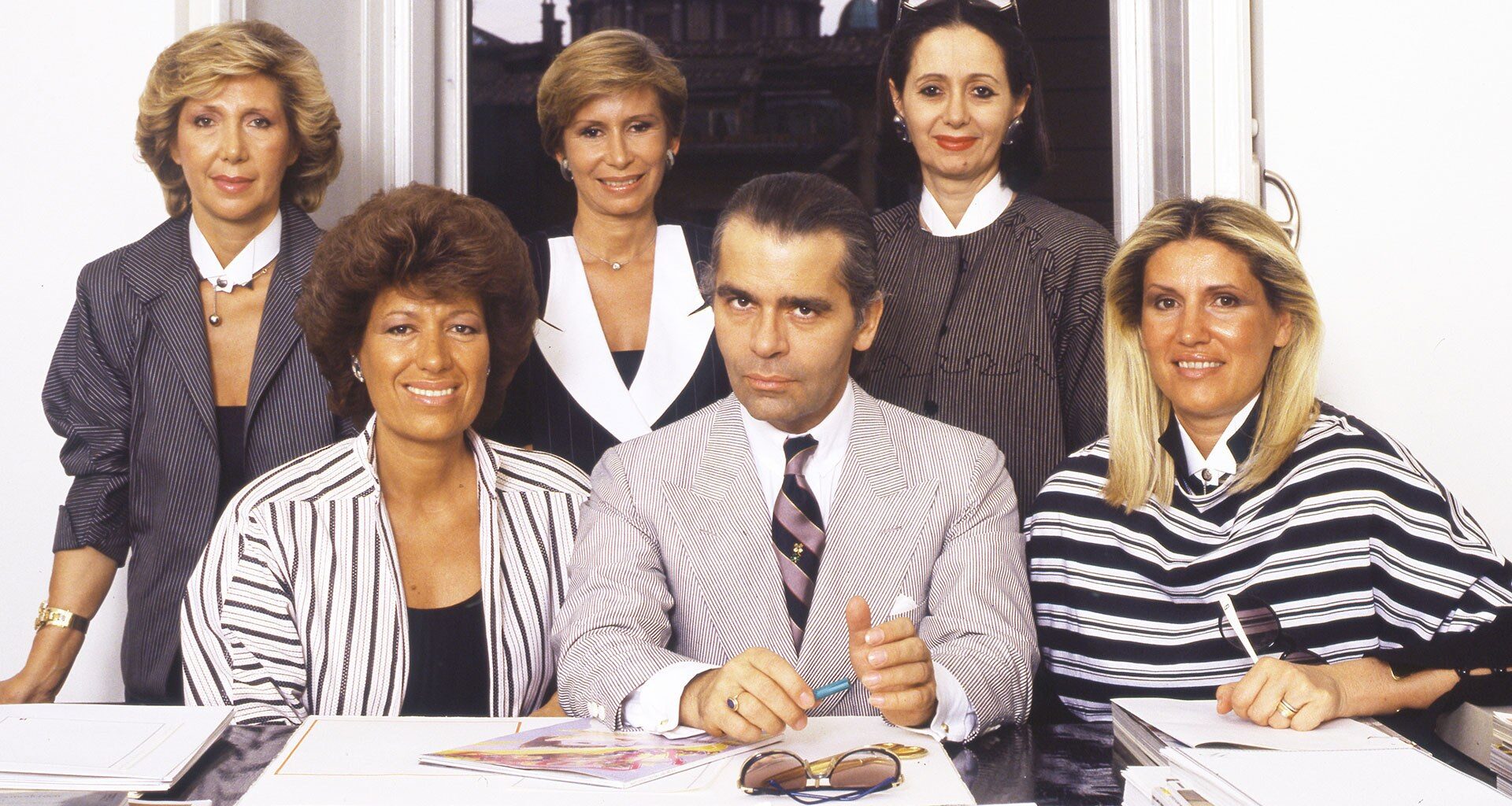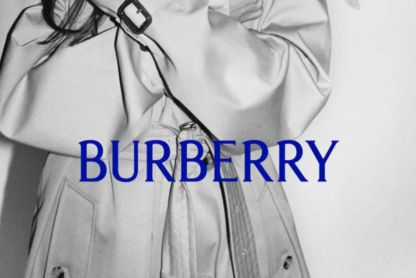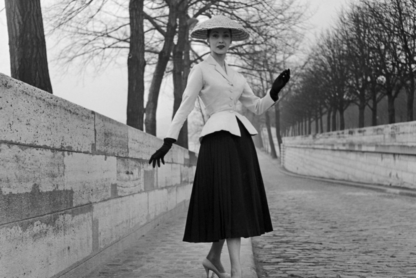Fendi is one of the oldest luxury fashion brands in the world. From launching as a small boutique to becoming a global empire, the Italian house found great international success.
Known for its luxurious furs, the distinguishable double F logo, and the iconic Baguette bag, Fendi has offered many remarkable products over 99 years, created by several generations of the Fendi family, as well as Karl Lagerfeld and Kim Jones.
Today, we are going to take you through the history and evolution of Fendi. Whether this is your dream company or you want to learn more about fashion history, this informative article will give you the dose of fashion you were looking for.
The History And Evolution Of Fendi
The Origins of Fendi
Fendi was founded in 1925 by Adele and Edoardo Fendi, in the eternal city of Rome.

The following year, they opened a small handbag and fur boutique via del Plebiscito. It was an immediate success, becoming a destination for Italian style.
Adele Fendi had pioneering ideas for the Selleria line (meaning “saddle”), inspired by horse bridles, which sold leather bags completely made by hand by local artisans.
Soon, a series of other collections and special collaborations followed, and Fendi was projected into the international fashion scene.

Fendi’s Artistic Directors
Fendi is known for being a strong family-run business since 1925, first led by Adele and Edoardo Fendi, then their five daughters, and currently the third generation with Silvia Venturini Fendi upfront. In addition, the Roman house has worked with external designers, from Karl Lagerfeld to Kim Jones.
Fendi sisters
Adele and Edoardo had five daughters: Anna, Carla, Franca, Alda, and Paola. Between the end of the 40s throughout the 50s, they began working for the family business.
Each sister was taking responsibility for a specific aspect of the business. Anna took care of the design and licensing office; Carla was in charge of the commercial and the press office; Franca served as the purchasing manager and managed external relations with clients; Alda was responsible for managing the atelier and the fur workshop, and Paola oversaw the fur segment.

Karl Lagerfeld’s years at Fendi
In 1965, the Fendi sisters invited Karl Lagerfeld to join the House as the lead designer, opening a big chapter in the history of Fendi. He stayed at the brand for 5 decades! The 54 years of collaboration between Lagerfeld and Fendi was the longest in fashion history between a designer and a Maison.
Karl Lagerfeld worked closely with Paola, Carla, Alda, Anna, and Franca Fendi. He used to call the Fendi sisters “the five fingers of a hand”. Despite Lagerfeld being the central figure, the five sisters were still heavily involved in the business to continue to innovate the brand’s offerings.

Under Karl Lagerfeld, Fendi went from a humble start as a small leather and fur boutique to becoming a global fashion house.
Double “F” logo

Karl Lagerfeld is the one who introduced the iconic “double F” logo. Contrary to what one might believe, it doesn’t stand for Fendi but is a wordplay standing for “Fun Furs”.
Fun fact: Initially, the logo was used as an inner lining pattern for luggage, but it ended up becoming an integral part of the entire brand’s aesthetic.
Fendi Fun Furs
Karl Lagerfeld made fur a powerful icon, redesigning and reinterpreting it over the years into many different versions. Thanks to Lagerfeld, Fendi became associated with fur even more and became one of the most sought-after brands for fur goods.
The German designer didn’t keep fur simply for fur coats and thought outside of the box. He used fur for everything from ready-to-wear to accessories. The designs became even more creative, and they began incorporating a lot of color, making Fendi pieces more unique and desirable.

Expanding the fur offering made the fabric more wearable for those who didn’t see themselves wearing fur coats. By pushing the fabric outside of its traditional association with coats, it democratized the fur, giving it a new look and a fresh, fashionable appeal.
Lagerfeld’s innovation also made fur more accessible to a wider range of customers with a lower purchasing power. Indeed, fur used to be seen as something reserved for the elite. But by employing the material in a variety of products, sold at more accessible prices, the fur became more desirable and met a higher demand.
Over five decades, Karl Lagerfeld preserved Fendi’s legacy, creating furs with unique craftsmanship along with the Maison’s skillful artisans. Since the brand’s beginnings, the experimentation with fur has driven the creation of Fendi’s collections and has served as a testimony of Fendi’s care for the quality of materials and remarkable creativity.
Fendi’s first ready-to-wear collection
After a strong entry at the house by developing its fur collections, it was time for Karl Lagerfeld to introduce Fendi’s first ready-to-wear collection in 1977. It wasn’t presented on the runway or in a campaign, but through the short film Histoire d’Eau by Jacques de Bascher, which is considered the first fashion movie in the history of fashion.

First Fendi shoe collection
Ready-to-wear was followed by a line of shoes in 1978.
Fendi fragrances
The Roman House also introduced a series of fragrances during the 1980s. The first Fendi fragrance, Fendi for Women, was launched in 1985, followed by Fendi Uomo in 1988.
Silvia Venturini Fendi
In 1992, Silvia Venturini Fendi, the third generation of the Fendi family (the granddaughter of Adele Casagrande Fendi), seconded Karl Lagerfeld in the Artistic Direction. In 1994 she was given the responsibility of Accessories and then of the Menswear lines.
Silvia Venturini Fendi invented two Fendi Icons: the Baguette and Peekaboo bags, created respectively in 1997 and 2008. These timeless pieces became news symbols of the Roman house.
Fendi Baguette Bag
Do you know why it is called a Baguette? Silvia Venturini Fendi was in fact inspired by Parisian women who would carry the baguette bread under their arms. So in 1997, she designed the bag in a way so that it could be carried as comfortably as a loaf of bread.
The launch of the bag was a pivotal moment in the history of Fendi, as the 90s was the time when the brand just began making handbags since it has been traditionally associated with leather goods and fur. So thanks to the Fendi Baguette, the Italian House also became associated with handbags.

Even though it didn’t gain instant popularity (which is hard to believe), in its debut year, the Baguette sold over 100,000 units! The success is due in high part to Sarah Jessica Parker who played Carrie Bradshaw in Sex & The City, which first aired in 1998. Perhaps you remember Carrie’s famous lines “It’s not a bag, it’s a Baguette”? She appeared multiple times in the series wearing the baguette and made it a popular and must-have accessory.
The production of Fendi Baguettes was discontinued in the 2000s, but the iconic accessory was revived in 2019. On September 9, 2022, Fendi opened New York Fashion Week with a special runway show to celebrate the 25th anniversary of the Baguette.
You can read more about the history of the Fendi Baguette in this piece we wrote.
Fendi Peekaboo Bag
The Peekaboo bag made its entrance at Fendi’s spring/summer 2009 runway. It first appeared in raw cotton toile, glossy patent leather, and perforated suede. As the name suggests, it refers to the traditional children’s game, ‘Peekaboo, I see you’.

Silvia Venturini Fendi explained at the time her inspiration for the Peekaboo bag: “There was an invasion of bags on the catwalk everywhere at the time, so I really wanted to create a bag that only a real leather goods maker like Fendi could possibly make. It was the moment to set things straight with a new classic.”
Fendi Peekaboo’s discreet and logoless design stood out from other bags that had embraced logomania in the 2000s.
Kim Jones’ career at Fendi
In 2020, British designer Kim Jones took the role of Artistic Director for Couture and Womenswear, becoming the first person outside the Fendi family to join the house since Karl Lagerfeld. He made his debut with the Fall/Winter 2021 collection.

Iconic Fendi Fashion Shows
Over the years, Fendi has staged some impressive fashion shows in spectacular locations.
Fendi’s show at the Great Wall of China
In 2007, Fendi was the first brand to stage a show on the Great Wall of China. This event is one of the most iconic moments in fashion history.

Fendi’s 90th-anniversary show
In 2016, Fendi celebrated its 90th anniversary, staging a memorable show at the Trevi Fountain in Rome.

Fendi’s show at the Temple of Venus
In 2019, Fendi’s Couture show at the Temple of Venus in the eternal city paid homage to the brand’s roots in Rome and Karl Lagerfeld. The collection included 54 looks, one for each year he spent in the Roman house.

Who owns Fendi?
Although Fendi has remained a family-run business, the company is owned by the luxury conglomerate LVMH.
In October 1999, LVMH Moet-Hennesy and Prada made a deal to acquire 51 percent of Fendi, while the Fendi family owned 49 percent. Fast forward to November 2001, Prada sold its 25.5 percent stake in Fendi to LVMH, giving LVMH full control of the brand.
Fendi Headquarters
In October 2015, Fendi inaugurated its new headquarters at the Palazzo della Civiltà Italiana after supporting the renovation of the building.

Fendi flagship store
Fendi’s flagship store is located in Rome, in Largo Carlo Goldoni Street, between Via Condotti and Piazza di Spagna. It also serves as a boutique hotel, the Fendi Suites.

For now, that’s all about the history of Fendi, and we look forward to seeing its evolution in the future.
Want to break into the fashion industry but don’t know how and you don’t have experience? Register for my free webinar where I share 5 unconventional strategies to secure your dream role in fashion. Follow me on Instagram for more updates.

